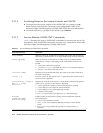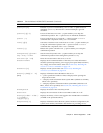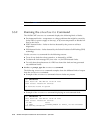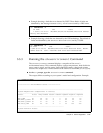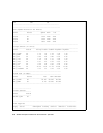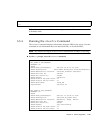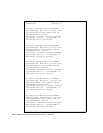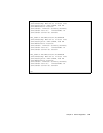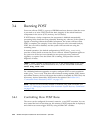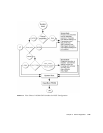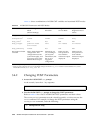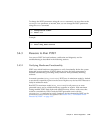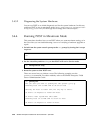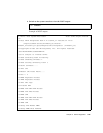
3-22 SPARC Enterprise T1000 Server Service Manual • April 2007
3.4 Running POST
Power-on self-test (POST) is a group of PROM-based tests that run when the server
is powered on or reset. POST checks the basic integrity of the critical hardware
components in the server (CPU, memory, and I/O buses).
If POST detects a faulty component, the component is disabled automatically,
preventing faulty hardware from potentially harming any software. If the system is
capable of running without the disabled component, the system will boot when
POST is complete. For example, if one of the processor cores is deemed faulty by
POST, the core will be disabled, and the system will boot and run using the
remaining cores.
In normal operation*, the default configuration of POST (diag_level=min),
provides a sanity check to ensure the server will boot. Normal operation applies to
any power on of the server not intended to test power-on errors, hardware
upgrades, or repairs. Once the Solaris OS is running, PSH provides run time
diagnosis of faults.
*Note – Earlier versions of firmware have max as the default setting for the POST
diag_level variable. To set the default to min, use the ALOM CMT command,
setsc diag_level min
For validating hardware upgrades or repairs, configure POST to run in maximum
mode (diag_level=max). Note that with maximum testing enabled, POST detects
and offlines memory devices with errors that could be correctable by PSH. Thus, not
all memory devices detected by POST need to be replaced. See Section 3.4.5,
“Correctable Errors Detected by POST” on page 3-35.
Note – Devices can be manually enabled or disabled using ASR commands (see
Section 3.7, “Managing Components With Automatic System Recovery Commands”
on page 3-45).
3.4.1 Controlling How POST Runs
The server can be configured for normal, extensive, or no POST execution. You can
also control the level of tests that run, the amount of POST output that is displayed,
and which reset events trigger POST by using ALOM CMT variables.



